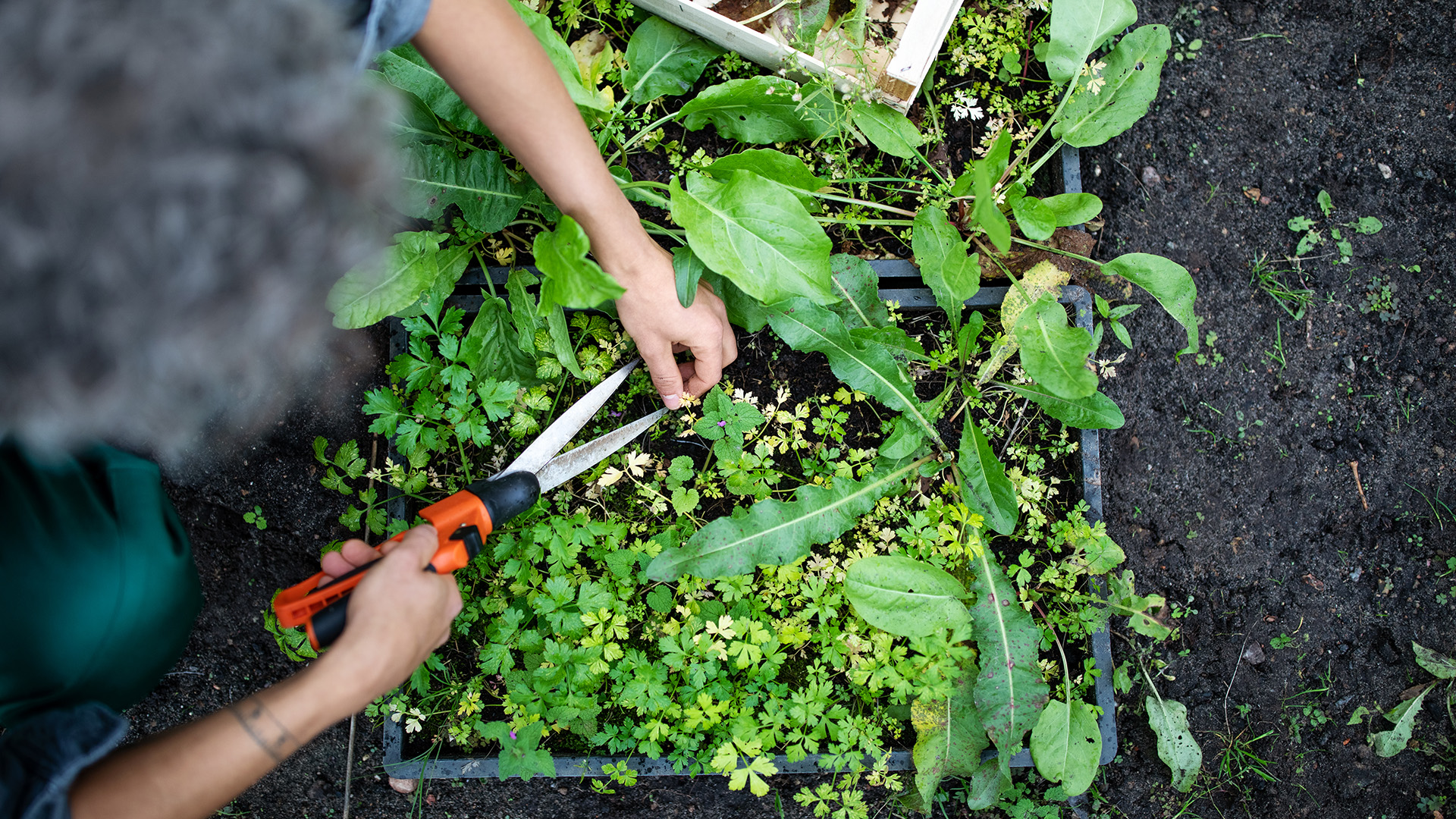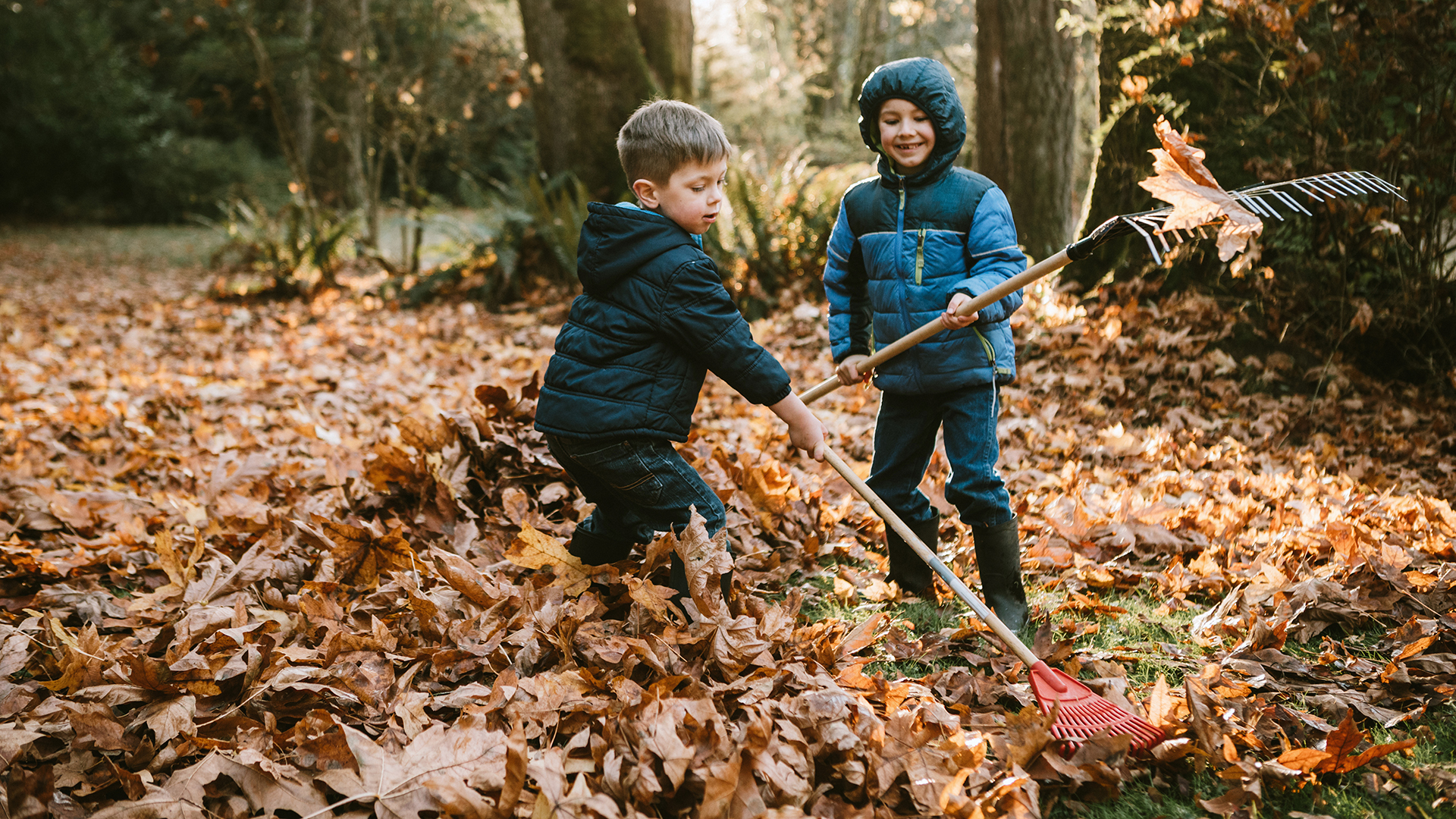If you think the gardening season is over once fall arrives, think again! This can be as busy as springtime in the backyard, so we have gathered together a selection of the best gardening in the fall ideas for you.
This is the ideal season to start tidying up your outside area, because once winter hits and the weather cools down you might not want to do it. Of course one of the biggest jobs for the fall is getting rid of leaves - not only do they look messy, but they can harbor pests and diseases as we will explain. You can make the job easy with one of the best leaf blowers to help tidy up your lawn.
Depending on where you live, if you get winter frosts, the fall is also the time to start thinking about moving or protecting tender plants. There are plenty of rewarding jobs to do at this time of year too, including collecting seeds and harvesting fruit and vegetables. Don't forget to add in some new plants to replace the fading summer flowering ones as well.
Jen Stark, gardener and founder of Happy DIY Home, lists her top gardening jobs for fall:
Consider planting a fall garden - You have time to get one more growth period out of your garden in the fall, especially if you pick out frost-tolerant plants. A few to consider planting include kale, chard, lettuce, turnips, garlic, onions, beets, carrots, and broccoli.
Pull up your dead plants - Make a point to clean up your summer garden before it gets too cold. Pull up any dead plants to prevent garden pests or fungal diseases from overwintering in them and getting a kickstart in the spring. Compost the healthy plants if they have no disease signs.
Till the soil - Tilling with one of the best tillers is arguably one of the quickest ways to get the soil ready to plant in the spring months again. You can use your tiller to incorporate compost or leaf mulch in to make it healthier. This will also expose any unwanted larvae to the air and prevent them from growing.
Gardening in the fall ideas
1. Sow cool-season vegetables
Summer may be over, but you can still harvest vegetables later in the year if you prepare now. Daniel Akins, writer, and editor at Theyardable says: “Fall is a fantastic time to sow cool-season vegetables for one more harvest before winter or to prepare garden areas for the next spring. A month or so before any late fall frosts, you can establish a cool-season garden before winter arrives. Vegetables to sow include:
- Spinach
- Lettuce
- Cress
- Radishes
- Carrots
- Cabbage
- Onions
- Turnip
- Broccoli
- Cauliflower
- Kohlrabi
- Beets
Angelia Daugirda, ambassador for Organic Plant Magic agrees: “Fall is the perfect time to get those cool weather-loving crops in - broccoli, cauliflower, carrots and cabbages. I absolutely love the colorful and unique heirloom varieties. There is nothing more satisfying than enjoying some beautiful Purple Sicily Cauliflower or Cosmic Carrots when the days are shorter and cooler. The best part about fall planting is that with a bit of preparation and know-how, you can harvest these well into winter in almost any zone.’’
2. Clean up your garden
Getting rid of leaves will keep your yard looking neat and tidy - a leaf blower will make the job easier! Not only that but raking leaves off the lawn will help your grass to grow - cool-season grasses such as Kentucky bluegrass need the sunlight to help them to get stronger before winter arrives. Although the leaf blower makes the job easier, raking your lawn can also help you to get the dead thatch out of your grass, and improve its health, Leaves can also harbor disease, so getting rid of them will help to prevent any spread to your lawn or plants.
3. Sort out garden tools
Erinn Witz, co-founder of Seeds and Spades, suggests that you drain your hose fully, coil it loosely and hang it in a sheltered location to store. Don’t forget to turn off the water to the spigot, she adds.
Then clean your garden tools: “Spray off any heavily soiled pieces with the hose, and if you’d like, you can soak your tools in a 10:1 water/bleach solution to kill pathogens. Allow to fully air-dry. Oil any tools with moving parts, and store spades and rakes blade-down in a bucket of sand.’’
4. Get pruning
Opinions vary about when to prune some plants. The general rule is to prune after the plant has flowers, so the fall is the time to trim back summer-flowering woody plants. Be careful not to prune your spring flowering plants - lilac, viburnum and azalea, for example. You’ll run the risk of chopping off flower buds and having no blooms in the following year.
Daniel has other thoughts on when to cut back perennials. He says: “I'm aware that many neat gardeners grit their teeth when I advise them to wait until spring to trim back their perennials and ornamental grasses. Leaving the stems and leaves standing until mid-spring is crucial for the ecology of your garden, neatness aside.’’
Erinn also warns against fully cutting down perennial plants: “Some plants need the remaining material to protect them against winter’s cold, and friendly insects frequently overwinter in dead plant matter. Also, some plants produce blooms on old growth, so you could miss out on some blossoms next year if you’re too aggressive this fall. You can remove the unsightly parts if you want to make things look tidier, but hold off on the majority of your perennial bed clean-up until the spring.’’
5. Prune hedges, trees, and bushes
It’s better to do this in September so that the plants have time to recover by winter, says Nastya Vasylchyshyna, a resident botanist expert for the NatureID app.
6. Plant perennials and bulbs
The fall is an ideal time for planting, as Zolene Quindoy, head of horticulture at Yardzen, explains: “Plants still get a lot of sunshine in the fall, but generally cooler temperatures mean they will require less water. It's helpful to get plants into the soil ahead of the rainy season, especially in drought areas, because winter moisture will help irrigate at no cost.
“Plants need time to get established and during the summer they're competing with plant-grazing insects. They may not show growth in the fall, but they are busy extending their roots and getting established beneath the surface! They will have more time to get established versus if you plant in the spring.’’
Make sure to water plants well after planting.
7. Clean up your vegetable beds
If you’re not using the beds for cool-season plants, now’s the time to get them sorted, says Erinn: “ Remove all plant matter from the vegetable garden and annual flower bed. Veggies can sometimes harbor diseases and pathogens that could affect next year’s crop if allowed to sit and rot. As long as there are no plants you know of that have pest or disease problems, throw that green material on the compost pile. Even if there are traces of harmful things, the composting process will neutralize them.’’
8. Look after wildlife
Consider leaving a small pile of sticks or fallen leaves in an out-of-the-way corner. This could be a habitat for small animals or birds to find shelter from the harsh weather.
9. Look after your soil
Now’s the time to prepare your soil for the next growing season, as Lindsey Hyland, gardening expert and founder of Urban Organic Yield, explains: “As the weather starts to cool down, it's time for gardeners to start preparing their gardens for winter. Make sure to add compost or organic matter to your soil. This will help keep the soil healthy and promote plant growth.
Nastya adds: “Prepare the soil for spring sowing: plowing, weeding, collecting fallen leaves, applying phosphorus-potassium fertilizers, manure tea, etc.’’

10. Trim dead foliage
Trim back any dead foliage and branches on your plants. This will help protect them from cold weather and pests.
11. Continue to water
Check on your garden regularly and water if needed. “Frost can kill plants that are not properly hydrated,’’ says Lindsey.
12. Plant spring bulbs
If you want to enjoy flowers as early as possible next year, then plant spring blooming bulbs in the fall. Flowers such as tulips, crocus, daffodils, and hyacinths are some of the first to bloom once the weather starts to warm up. Fall is also the best time to plant hard neck garlic bulbs for a mid-summer harvest.
13. Hunt for bargains
Check out your local nursery for end-of-season bargains, suggests garden photographer and writer for Garden Design Janet Loughrey. “More expensive trees and shrubs are often discounted so that nurseries don't have to carry extra inventory through the winter. Plant new specimens as soon as possible and keep them well-watered until they go into dormancy. They'll be ready to grow and bloom in spring.’’
14. Introduce fall color
If your summer annuals are now past their best, replace them with some seasonal colour, with chrysanthemums, grasses and ornamental kale.
15. Seed your lawn
Now is the time to revitalize your lawn or sow a new one. Kendall Green, of lawn care specialists Jonathan Green, says: “Fall (between mid-August to mid October) is the best time of year to seed a cool-season lawn. The warm soil temperatures and cool weather present the best combination of conditions for grass seed to germinate.’’
16. Feed your lawn
Feed your lawn with phosphorus-potassium fertilizers, which help stabilize the water balance in plant tissue, adapt the plants to unfavorable conditions, and help them overcome winter, suggests Nastya.
17. Plan for spring
Fall is the perfect time to plant spring flower bulbs such as tulips, crocus, daffodils and hyacinths. You can also sow cold-hardy plants in the open ground in October - this will ensure early flowering in the spring. Plants to sow include calendulas, poppies, cornflowers, and nigellas. Fall is also the best time to plant hard neck garlic bulbs for a mid-summer harvest.
18. Protect your plants
Not all garden plants can hold up to winter weather, so start getting them protected. “Mulch and shelter young and warmth-loving plants with spun bond, especially if you live in the Northern States (this is often done from late September to mid-October).’’ says Nastya. Plants in pots can also be moved to more sheltered areas of the yard, or placed in a garage or other garden building.
19. Pull the weeds
Fall is a great time to pull any weeds that have been hiding from you all summer, syas advises Amy Andrychowicz, gardening expert, author and founder of Get Busy Gardening. “Once the plants begin to go dormant, the weeds are much easier to see and reach.’’
20. Collect seeds
Grow plants for free by collecting and harvesting seeds of any plants that you plan to grow in the future.
21. Get rid of diseased fruit
Pick and dispose of any diseased fruit and berries, says Nastya. “Keeping them on trees and bushes will cause them to rot, becoming a source of fungal and bacterial diseases.’’
22. Empty and store rain barrels
If you have a rain barrel, be sure to winterize it a few weeks before freezing temperatures normally set in says Amy. “Otherwise an early cold snap could cause major damage, or even destroy your barrel.’’
Discover more guides for the garden…
Best gas lawn mowers
Best electric lawn mowers
Best patio heaters
Best inflatable hot tubs

